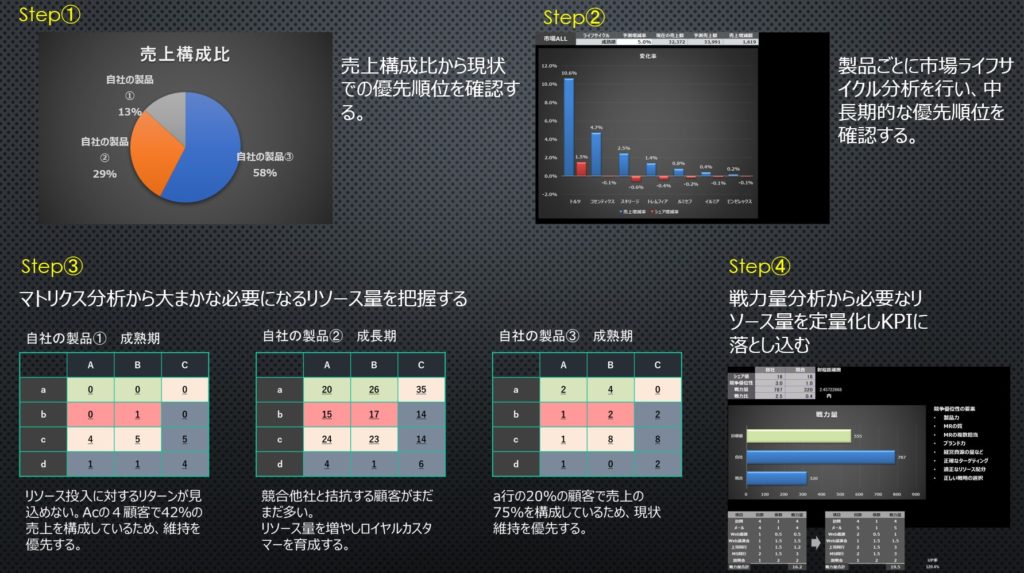
複数ある各プロダクトチームから、ダイレクトにビジネスプランが営業部門に落とされることには問題があります。
プロダクトごとの活動優先順位が交通整理をされないままでは、営業現場の混乱を引き起こします。
各プロダクトチームは担当製品の目標達成のために必要十分なリソース量を課してきますが、営業も人の子、活動量には限界があります。
結果、全てが中途半端に終わることになります。
市場環境は営業担当者ごとに異なるため、標準化された分析の方法が必要です。
市場ライフサイクル分析とマトリクス分析、そして戦力量分析を用いた、リソースアロケーションの方法を4つのStepで行ってみました。
これによりリソース量をKPIとして数値化することが出来ます。
注意すべきは、KPIは達成すべきゴールではなく、行動の指標だということです。
KPIは、KRIそして最終的にはKGIを達成するための手段であることを忘れて、手段を目的化しないことです。
強化、縮小、維持、撤退
この4つの基本戦略に沿って、リソース配分を決定します。
リソースの総量は企業ごとの経営資源の量により決まります。
そのため、経営資源に優る大手が戦力的に有利となりますが、中小企業であっても市場細分化を行ない、4つの基本戦略によりリソースを集中投下することで競争優位を築くことは可能です。
“How to Determine Resource Allocation for Multiple In-House Products”
Directly passing business plans from multiple product teams to the sales department can pose significant challenges.
Without proper prioritization of activities for each product, it can lead to chaos in the sales field.
While each product team allocates resources as needed to achieve their product’s goals, the capacity for sales activities has its limits.
As a result, everything ends up being half-baked.
Because market conditions vary for each sales representative, standardized analytical methods are essential.
In this article, we explore a four-step approach to resource allocation using Market Lifecycle Analysis, Matrix Analysis, and Force Capacity Analysis. This allows us to quantify resource levels as Key Performance Indicators (KPIs).
It’s important to note that KPIs are not the goals to be achieved but rather indicators of actions taken.
Remember that KPIs are a means to achieve Key Results Indicators (KRIs) and ultimately, Key Goal Indicators (KGIs). Don’t lose sight of the fact that they are a means to an end, not an end in themselves.
Strengthen, reduce, maintain, withdraw
Determine resource allocation according to these four basic strategies.
The total amount of resources is determined by the amount of management resources for each company.
For this reason, large companies with superior management resources have a competitive advantage, but even small and medium-sized companies can establish a competitive advantage by segmenting their markets and concentrating their resources on four basic strategies.

